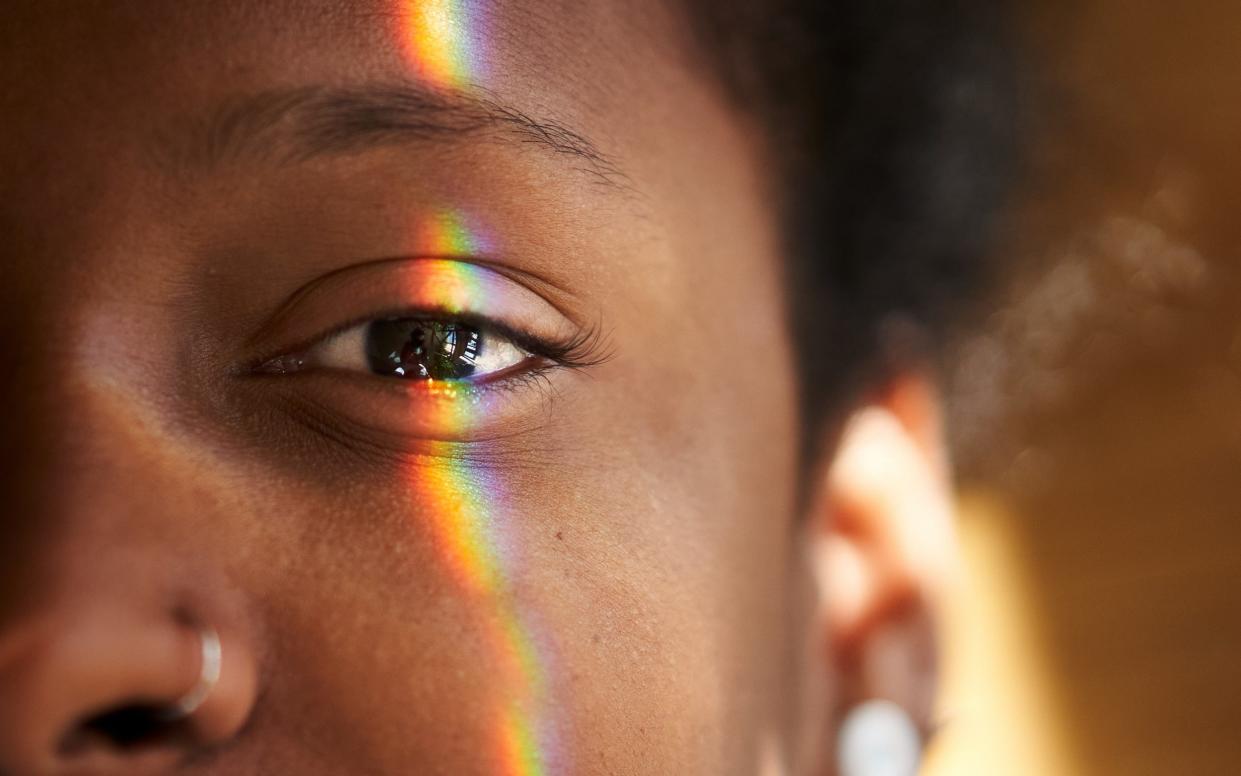First treatment for macular degeneration now available in UK

Patients with a degenerative eye condition could keep their sight for longer thanks to the development of the first treatment for the condition.
After successful trials in the US, a light therapy treatment that claims to help patients maintain or improve their vision is now available in Britain.
There are currently no approved treatment options on the NHS for people with dry age-related macular degeneration (AMD), which causes blurring or distortion to vision and can lead to blindness. Instead, patients are advised to manage the condition with lifestyle changes such as eating healthily and stopping smoking.
But now a handful of private clinics are offering a painless, non-invasive light therapy treatment which researchers say could help the condition.
An estimated 700,000 people in the UK have AMD, with the condition affecting one in every 200 people over the age of 60 and one in five over the age of 90.
There are two types of AMD, wet and dry. Both involve the deterioration of the macula, a tiny part of the retina at the back of the eye which is vital for our central vision and ability to see fine detail and colour.
Around 90 per cent of AMD patients have the dry form, where the macula deteriorates as retina cells die and are not renewed. And around one in 10 have wet AMD, where abnormal blood vessels grow into the macula.
Treatments are available for wet AMD in the form of regular injections into the eye or light treatment therapy, but there are no existing approved treatments for dry AMD.
The new treatment involves a technique called photobiomodulation, uses LED light at different wavelengths to stimulate and reinvigorate cells at the back of the eye.
A randomised controlled trial of the technology in the US found dry AMD patients who had the light therapy delivered through a device called Valeda experienced almost double the improvements in their vision after 13 months of treatment, compared with those treated with a dummy device.
The patients, who were all aged over 50, received a “cycle” of nine sessions of five-minute treatment over three to five weeks, repeated once every four months.
At the end of the study, patients treated with Valeda were able to read 5.4 more letters on a sight chart. Treated patients also had less of a type of swelling within the eye, which can indicate the disease is progressing, compared with those treated with the dummy device.

The study, published last month in the journal Retina, was led by the technology’s manufacturer LumiThera and tested on a small group of 100 patients.
Early results, which have not yet been formally published, from a 24-month follow-up period of the same patients suggested those treated with the light therapy were significantly more likely to retain their vision over two years and did not experience significant side effects.
The device is still classed as “investigational” in the US, which means it can only be used as part of research to determine its efficacy and safety.
Its effectiveness is currently being assessed in clinical trials and it has yet to be considered by the National Institute for Health and Care Excellence in England and Wales for use in the NHS.
But it has been approved for sale in Europe.
The technology is now available at a handful of private clinics in the UK and has just been launched by the Optegra eye hospital group – the first chain to take it on.
The company is trialling the device at its Manchester hospital before rolling it out nationally.
‘Happy to provide hope’
Sajjad Mahmood, a consultant ophthalmic surgeon at Optegra Eye Hospital Manchester, said: “After so many years of having to report to my patients that there are no direct treatment options, I am so happy to now provide hope.
“I have many patients with dry AMD and have had to watch their vision decline over the years… But now that can change. With this new treatment we hope that a good proportion of patients with the earlier forms of dry AMD will improve their vision or at least stabilise the condition.”
An initial year’s treatment, consisting of consultations and three cycles (each involving nine treatment sessions), costs £4,635. Each subsequent cycle is £1,495.
Cathy Yelf, chief executive of leading sight loss charity the Macular Society, said: “Finding a therapy for dry AMD is a priority. We’re following these trials very closely. We look forward to seeing a more extensive study to ensure any potential benefits of this therapy can be clearly demonstrated, allowing people to take it up with confidence.”

